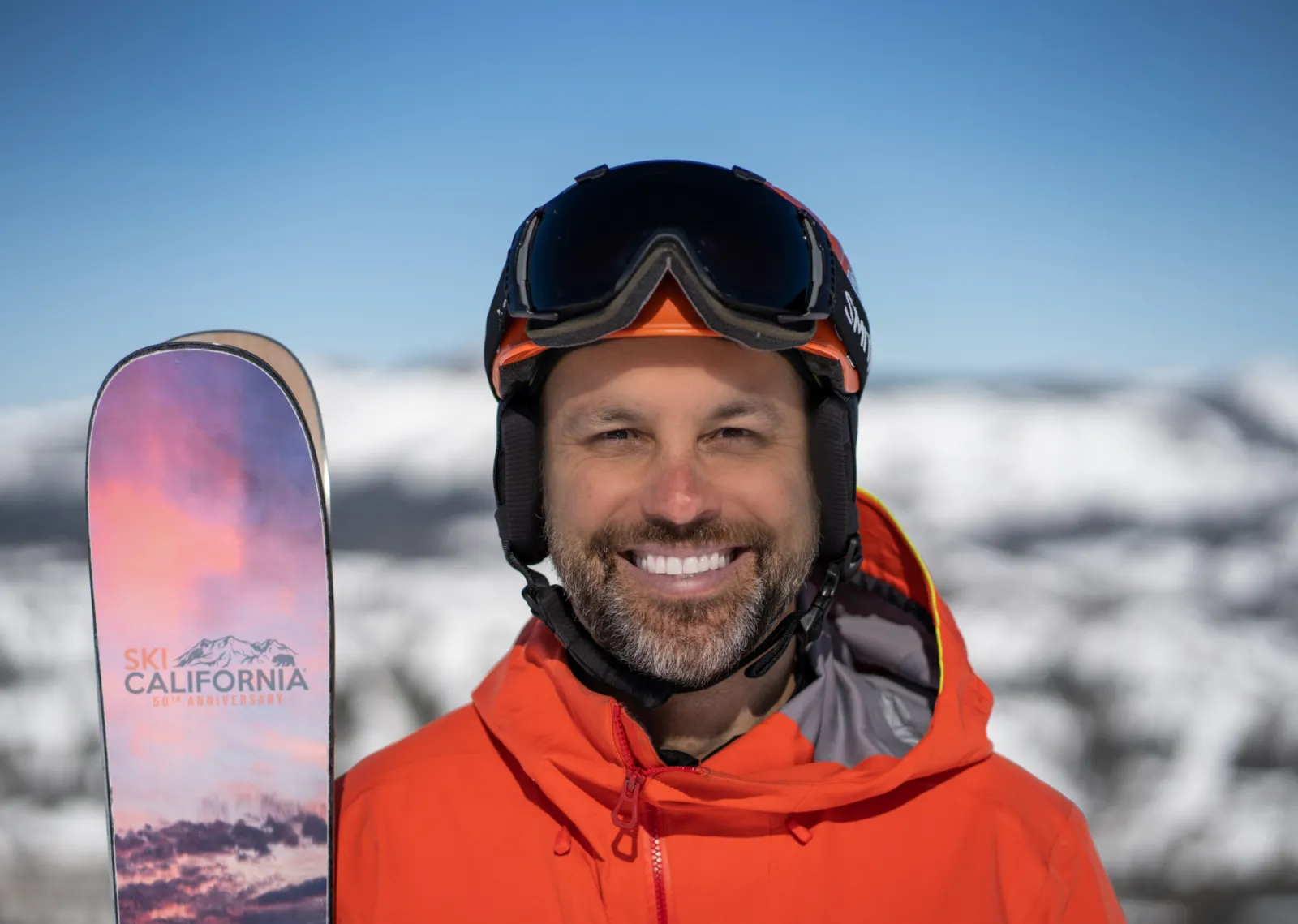Think Globally, Act Locally: How four marquee outdoor brands market to both regional communities and the entire world
Should a brand have the ability to adapt global creative, messaging, and executions for regional markets? Or should its global creative vision be malleable enough to work everywhere? The question of localization versus global standardization in marketing is one many outdoor brands continue to struggle with, particularly those who work across vastly different cultures, customs, and geographies.
Of course, there is no one-size-fits-all solution. Still, we decided to ask a handful of outdoor brand marketers how they tackle this dilemma, what struggles they face, and what their recommendations are for other companies going global. Below you’ll hear from four North American outdoor industry Marketing or Brand Managers from Arc’teryx, Husqvarna/KTM, Smartwool, and The North Face to share their experiences and perspectives. So buckle in and enjoy the ride.
Origin: How does your brand approach this question of global vs local when it comes to consumer marketing? Are you in the camp of ‘adapt for regions’ or standardization across the board’? Or are you adapting certain elements of your marketing efforts but not others?
Denise Anderson, Head of Global Marketing, Smartwool: We are working mostly towards standardization but take a bit of a hybrid model for specific marketing channels. We have a global brand identity and corresponding brand standards that we strive to establish and maintain consistently across every region. Creative execution is mostly done by the global team in the US for economies of scale and efficiencies. However, we do recognize that each market is in a different stage of growth which requires a certain level of adaptation The regional sales and marketing managers work very close with HQ to identify those situations and work collaboratively to find solutions.
Jill Young, Brand Manager, Arc’teryx Equipment: We are definitely sitting in both camps right now as we grow and learn how to become a truly global brand. It is important for us to adapt concepts and strategies for regions in a way that is still true to the overall brand message and goals, however, that’s easier said than done! There are certain messages and campaigns that come from HQ and are slightly tweaked for regions – sometimes it’s language, or the story being featured. And in some cases, we present the concept and let the regional teams adapt and develop it into something that will really land well in their culture.
Allison Thompson, Marketing Manager, KTM, Husqvarna Motorcycles, GasGas: KTM, Husqvarna Motorcycles and GasGas adapts certain elements but not others. For example, our advertising is standardized, yet our events and consumer activities are adapted for the regions. This is due to different consumer cultures, geography, climate and essentially the product mixes we have in Canada.
Virginie Murdison, Sr. Marketing Manager, Salomon Canada:
Internally we talk about global/local relay. Local market feedback is key and it happens early in the process. Our global teams and local marketing managers in the regions work collaboratively to drive brand strategy around creative concept, campaign fundamentals, align on consumer calendars and review the assets across all consumer touchpoints. We adapt certain elements of the communication by channel and add local flavour with strong and authentic partnerships.
Carl Bissonnette, Sr Marketing Manager, TNF Canada: For The North Face, we have a two-pronged approach on this. While the overarching brand campaigns are globally aligned across regions, we still have room to maneuver when it comes to the different tactics and initiatives, where adaptations sometimes have the opportunity to increase the consumers’ engagement with our brand... This allows all markets to support the same campaign objectives, while streamlining the creative “heavy lifting” that frames our campaigns, thus making the initial creative investment more efficient. Where we see opportunities to “act local” is more in the tactics themselves; this is where we will adapt some of our efforts to acknowledge consumers' regional specificities.
Origin: Are there elements of your marketing strategy you believe can or should be standardized, and to what degree?
DA, Smartwool: Our Brand Framework – a mix of our aspirational target, creative vision, purpose & values and brand architecture is standardized across the globe. Also, our Go To Market process. We are working to better localize campaigns with imagery / tone / seasonality, but again try to align on initiatives for economies of scale and resource efficiencies.
JY, Arc’teryx: Definitely! When campaigns/events are globally relevant, we make sure the overall strategy and essence of any campaign - tone and art direction (in the majority of cases), and often general activation ideas are standardized. We then can tweak bits and pieces of those to make them suitable for each region but still consistent with the overall brand direction and goals. (See our Interview with Cooper Gill, creative director at Arc’teryx.)
AT, Husqvarna Motorcycles: For a brand to become a world leader, firstly, the brand values and messaging should be standardized. However, a global brand should be creating values that regions can adapt their strategies around. For brand values such as KTM’s "Extreme" or "Performance" there are different circumstances in different parts of the world. It could mean supporting racers in the Dakar Rally, or supporting participants at the Corduroy Enduro race in Ontario. As long the activity aligns with and is executed following our brand values, it works. Each one of our brand's brand values were designed to work throughout the world, yet our marketing approach is to think Global and act local.
Origin: Are there elements of your marketing strategy you believe can or should be localized, and to what degree?
DA, Smartwool: Wholesale marketing efforts may sometimes be localized to support a specific initiative for that account. Also, media strategies based on consumer shopping behaviours – as well as our maturity within that market. Finally, ambassador and athlete content, as well as event activations, are localized to be more relevant to the local consumer/buyer target.
JY, Arc’teryx: Yes. We try to have teams on the ground in our epicentre regions to make sure we have content that is relevant for that area – whether that be on local social media channels to ensure we can build community with inspirational content that makes sense, product campaigns to make sure the styling and items are relevant for that climate, or in-person events (when those were a thing) to make sure activations are exciting for that market. We try to work with and learn from people in our various regions who have a strong connection to, and understanding of, the audience in that local region.
Origin: What is your biggest challenge associated with having the HQ in a different country where the culture, language and certainly audience are so different?
DA, Smartwool: It's hard to instill a culture of always thinking globally when you are not physically in that region. We must constantly remind ourselves how would this work for partners in xx region?
JY, Arc’teryx: Translations/transcreations: Campaign copy, headlines, taglines and event concepts often do not translate very well. It’s also tough to find characters or stories that are truly relevant in various regions, especially on a limited budget. Multi-cultural relevance is another struggle, because what’s cool in one place can be extremely lame in another. Sorry: I know thats more than one!
AT, Husqvarna Motorcycles: Design and copy can be challenging. The two-language requirement for Canada is often overlooked when creative is conceived. Not only is it challenging to translate marketing copy to be concise, effective and to align with brand values, but it takes a considerable amount of budget and lead time that is not always factored in at every level of the organization. I get that Canada is a tricky country to understand if you are looking at us from across the Ocean. We have a huge land mass, 2 languages, different climates, and different motorcycle riding cultures throughout the nation. And we generally put our motorcycles to sleep for 4-6 months in the winter.
CB, TNF Canada: “Assumption is the mother of all mistakes!” Simply put, the biggest challenge I have seen through the years relates to assuming that things will work everywhere! To corner this, we have improved deeper understanding of our different regions with the Global teams, and as a “regional team” here in Canada, we have taken necessary steps to better organize communication, market information and data, to provide better context to our global partners.
Origin: Can you describe a time where a concept has been transcreated into different executions for a more regional campaign approach? What worked and what didn’t?
DA, Smartwool: Not a specific concept but we have had instances where a project was initiated within a specific region and not with the HQ team that were very off-brand and misaligned to the brand identity and positioning. Without a solid Brand Framework that the marketing and creative teams embrace globally, you’re leaving it up for interpretation. And that can be damaging over time.
CB, TNF Canada: In the US, The North Face has partnered with Girls Scouts of USA to empower, equip, and encourage girls as they boldly adventure outside. For Canada, we partnered with Fillactive/Fitspirit, an organization helping teenage girls to be physically active throughout their lives, creating unforgettable experiences for them and building a community of inspirational, committed individuals around them. The primary idea was the same in both regions, but working with Fillactive, we felt The North Face was doing its part to support a local organization that has a direct impact on Canadians.
Origin: Is there a time where you’ve felt that it wasn’t appropriate or necessary for a global marketing initiative to be adapted or executed differently on a local level? Why or why not?
JY, Arc’teryx: I think there’s always an element that needs to be adapted – it could be as little as translations or launch timing, or as much as an entire story produced to make sure there is relevance in that local area. I think you know (or at least can hope) you’ve landed on something really strong when the concept needs less adapting.
Origin: Can you share your biggest learning in taking your brand internationally and for marketing in new regions?
DA, Smartwool: Firstly, we work to install a culture that thinks globally. Second, always lead with your brand purpose and values. And be sure that you completely understand your consumer: Their mindset, passions, and lifestyle. This is how you’ll find the relevance that can be the red thread that ties your brand to consumers across various markets and regions.
Jill: Vet as much as you can, as early as you can with teams in those regions, and never assume you know what will land well around the world. Just like traveling in a new culture (I miss it!) – go in with a humble attitude and willingness to listen.
So what’s the secret recipe for creating a successful global brand in the outdoor industry?
Most importantly, organizations should seek to create a brand essence that resonates globally, across all cultures. For marketing campaigns, vet insights early and often to ensure they are relevant for all regions and adapt if they aren’t. HQ’s should lean on their regional counterparts as much as possible and consider localizing marketing efforts such as ambassador strategies, or other elements which are extremely culture-bound. Conversely, companies with localized teams that have more autonomy should ensure all marketing campaigns are aligned with the brand purpose and values to avoid brand dilution. It’s a fine line between building economies of scale and having locally relevant marketing, but with a constant line of communication between the global head office and regional partners, there’s a sweet spot on the spectrum of local versus global that will be right for your company.






